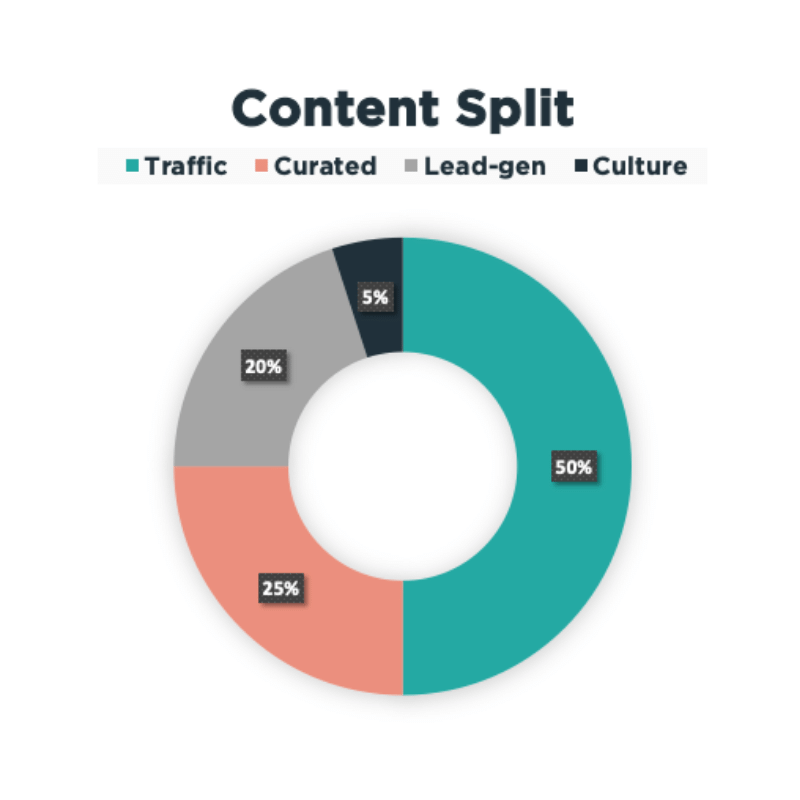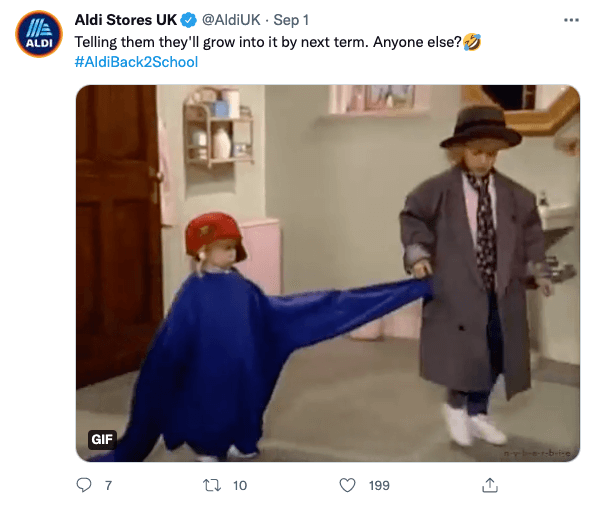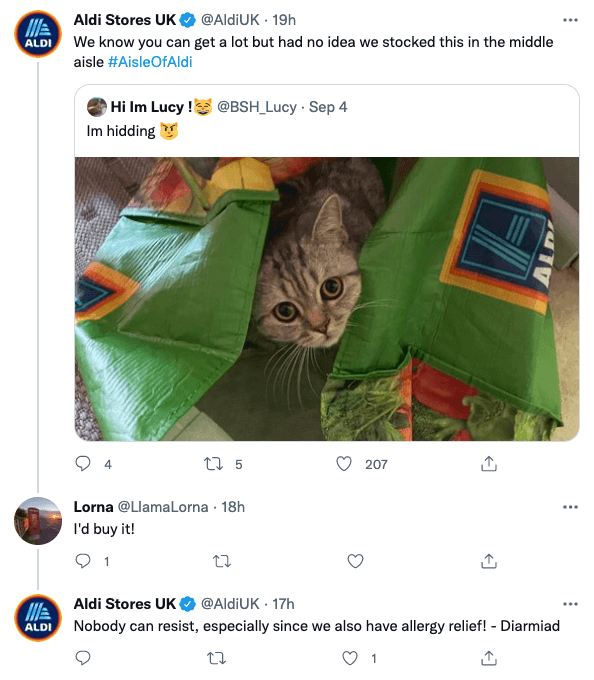For some brands, social media is a channel that’s often seen as a tick-box exercise or last-minute thought, but given the right time and resources, social marketing channels can generate leads, boost your brand’s perception and drive sales.
Research shows that over 45% of 16-34 olds research products online via social networks, so if you’re a brand who is still getting to grips with social or you’re looking to refresh your current strategy, no matter the industry, a targeted and well-considered social media strategy is essential to developing your brand in 2021.
‘But where do I start?’ I hear you ask… Here’s our guide to developing a social strategy, including some top tips on which tools to use.
1. Define your audience
For any brand, defining and understanding your target audience is key to developing an effective social media strategy.
Your target audience can’t just be “everyone”.
It’s important to define the groups of people (or segments), most likely to engage with your product or business, based on demographics such as age, location, their interests and even job titles – but you can go a lot further with some carefully selected tools.
There’s a great number of tools available to help better understand your audience’s behaviour online, enabling you to create meaningful audience profiles based on data, such as:
- SEMrush (free trial available) – great for understanding key demographics within an industry, competitor insights, as well as a huge amount of information about your own site
- Google Analytics (free) – If you already have an established website, don’t miss out on important information on the people who are already visiting your website (check out the Audience section)
- SparkToro (free starter subscription) – this comes with a free subscription and delves deeper into podcasts, accounts followed on YouTube/Twitter/Facebook, but also hashtags and phrases in their bios. All juicy stuff
- BuzzSumo (free trial available) – ideal for understanding the types of content that has worked well, especially on topics close to you (and identifying influencers!)
There are many ways to nail down your key audience for targeting. Creating personas is a great way to get to know your audience and really understand their needs. So, when it comes to targeted campaigns and content for both consumer and B2B industries you can be specific – whether they’re a key decision-maker at an accountancy firm in Newcastle, or they love to watch I’m A Celebrity, are a fan of Holly Willoughby, listen to That Peter Crouch podcast or shop at Aldi – all of this encapsulating who that person is, their humour and passions, so you can help forge a connection with your brand.
Once you’ve defined your target audience, you’ll need to establish which social media platforms are used most frequently by them. This can change as your audience develops and new trends in social come to the scene, so it’s important to review this regularly.
Sprout Social has a regularly reviewed dashboard to help align baseline demographics with your personas. Here’s a few highlights:

- # of monthly active users: 2.7 billion
- Largest age group: 25-34 (26.3%)
- Gender: 44% female, 56% male
- Time spent per day: 38 minutes
- # of monthly active users: 1 billion
- Largest age group: 25-34 (33.1%)
- Gender: 57% female, 43% male
- Average time spent per day: 29 minutes
- # of daily active users: 187 million
- Largest age group: 30-49 (44%)
- Gender: 32% female, 68% male
- Time spent per day/week: 3.53 minutes per session
As I said, Sprout updates this information regularly, so add it your bookmarks and check in every now and again – especially when reviewing your strategy.
Interested in personas? We’ve got a great section in our how to create a digital PR strategy article.
2. Social listening
Our second step in creating an effective social media strategy is social listening, aka: professional snooping! Social listening involves using tools, such as Hootsuite, Talkwalker and Sprout Social, to monitor social media channels under the radar.
The main purpose of social listening is to understand the online perception of your brand and industry, allowing you to tailor your social media marketing accordingly, in line with any current trends. But you can also set up alerts for specific keywords or competitors and is something to align your overall long-term and/or reactive strategy to.
You can use social listening to:
- See what is being said about your brand, specific products, or your industry as a whole – sentiment analysis is a great metric to monitor here, as well as pulling out key words that are most commonly tied to your brand.
- Get an understanding of the market, feelings around market-leading products and services – feeding into the best topics for you, how to position your products and services as well as which hashtags and best practices you can identify.
- Look at what competitors are doing – from the posts and content they share, hashtags they engage with or promote, it’s all-important stuff that can be important for your strategy.
- Keep an eye on currents trends and viral stories – allowing you to join the conversation, as well as creating reactive campaigns (based on data!).
- Get ahead of any crises and monitor any situations tied to your brand.
But who does it well? Aldi. Aldi does it very well… And that’s for several reasons:
- They know their audience inside-out – engaging in the topics that their audience loves injects the Aldi brand into the audience’s everyday life.
- They engage with trends and tie it back to their brand
- They join in with the conversation – creating those ‘surprise and delight’ magic moments with their humour
- They spot those hidden gems when someone is talking about them
- They’re confident in who they are, have a clear tone of voice and are happy to be playful with it
Aldi are brilliant, but there are so many other brands doing amazing things out there – so it’s important not to just look at your own market, but look outside it too, drawing inspiration and lessons that you can leverage to differentiate yourselves in your market.
3. Community Management
Community management is a proactive response to social media monitoring, actively engaging with your online audience to boost your brand’s perception and showcase its personality.
This involves responding to direct mentions and comments by customers from a customer service perspective but also getting involved in conversations, responding to influencers where relevant, and engaging with users talking about your brand (see Aldi above!).
Combined with social listening, you could also try vanity searching, or ego-surfing: using social media listening tools to search for mentions of your brand, without necessarily having been directly tagged, and responding to these. This helps you respond to customers and foster their loyalty and trust, whilst simultaneously understanding how they perceive your brand and products. This direct and real-time customer feedback can allow you to make changes to your product, brand or business that reflect customer demand.
Tesco Mobile’s Twitter is full of great examples of social listening, vanity searching and community management, with a few sassy responses in there!
For example:
We’re really sorry.
@ any other mobile networks you think should be sorry. pic.twitter.com/uIdwPn6MPR
— Tesco Mobile (@tescomobile) March 3, 2021
Here, Tesco is showing a slightly cheeky side, owning its brand while employing powerful social media strategy which not only gets people talking about the brand, but drives sales too.
Remember, social media is about being social – the clue is in the name! Build a community and engage with them regularly, and make sure you take the opportunity to have two-way conversations with online communities you are part of.
4. Content Mix

Although this is unique to each brand, there are some guidelines that you can follow to produce varied and interesting content.
Here’s one example:
- 50% of content will drive traffic back to your website
- 25% of content will be curated from other sources
- 20% of content will support lead-generation goals (newsletter sign ups, eBook downloads, etc.)
- 5% of content will be about your company culture
Don’t forget to vary your content type across social channels.
Different media such as videos, gifs, images, and polls can have better engagement rates than just text. While the up-front effort might be more, stats show that social media posts with video have 48% more views, viewers retain 95% of a message when they watch it in a video compared to 10% when reading it in text, and 72% of customers would rather learn about a product or service by way of video.
Importantly, you need to work out what’s working and what isn’t with your brand.
Try out different content mixes, and continually evaluate and reflect to find the right balance. Think about your audience personas and what they would genuinely be interested in seeing – you might even be part of that audience category, so ask yourself: would I stop scrolling to read this post, watch that video or click on this link? If not, then think of something else!
5. Content Calendar and Scheduling

Scheduling allows you to post across various social media platforms without having to lift a finger (once you have scheduled it that is!)
Although your social media should contain elements of reactive posts, the majority can be pre-planned and populated with content that follows your long-term strategy or goals.
In terms of the best times to schedule your content, this depends on your target audience and when they are most active on social media. Once you’ve created your audience personas, you can work out the best time for you to post.
Another piece of advice is to align your content calendar to bigger real-world events that are relevant to your brand, such as national awareness days (Social Bakers has a great social content calendar list here). By jumping on to these bigger events, you can get involved in social conversation and make use of relevant hashtags, keeping your brand relevant on social media.
However, content scheduling does come with a big warning sign!
Be prepared to alter or pause any pre-planned content depending on current news or trends – either to reflect a viral sensation or to deal with a crisis. Unfortunately, the “always on” approach to social media means that it also comes with the capacity to make or break a brand, with poor social media delivery potentially damaging a brand’s reputation.
Content scheduling is essentially there to make your life easier, but it doesn’t mean you can click “schedule post” and forget. Our advice is to stay alert to current news and trends and make sure your content reflects this.
6. Analysis and evolving your social media strategy
Whether you’re using a social management platform or posting directly, it’s important to regularly monitor your performance.

Important things to cover in your social media reporting are:
- Key metrics that ladder up to your overall objectives i.e., engagement rate, follower growth, link clicks, conversions etc.
- Best performing posts (across each platform) – with a breakdown of why you think it performed so well. For example, this could include things like…
- Length of post copy
- Use of emojis
- Use of media i.e., Image vs Video vs Gif
- Types of links
- Types of content i.e., do how-to guides resonate more, or are your audience engaging with you when you post specific products?
- Hashtags and tagging i.e., did engaging with a specific trending hashtag work? Did tagging that influencer expand reach and drive engagement?
- Types of media i.e., are they people-focused, infographics or maybe they’re too generic?
- Overview of overall performance – taking those metrics to see what the overall performance trend is for each platform, comparing Month on Month (MoM) and even Year on Year (YoY) to demonstrate success or opportunities to improve
- Lessons learned – a vital part of your report, summarising everything above and what you’ll take with you into next month (as well as if it’s impacted your plans and strategy)
Besides monthly reports, it’s always important to be checking-in on your performance regularly to ensure you’re moving towards achieving your goals.
Key takeaways
An effective social media strategy is essential for any brand, especially as 71% of consumers who have had a positive experience with a brand on social media are likely to recommend the brand to their friends and family. It can really make or break a business.
Although the time taken to effectively and successfully manage a social media strategy is often highly underestimated, it’s time well spent. The key is to understand who you’re talking to, engage with them, and demonstrate how you can make their life better.
Let’s grab a brew and discuss how we can help with your social marketing strategy.















